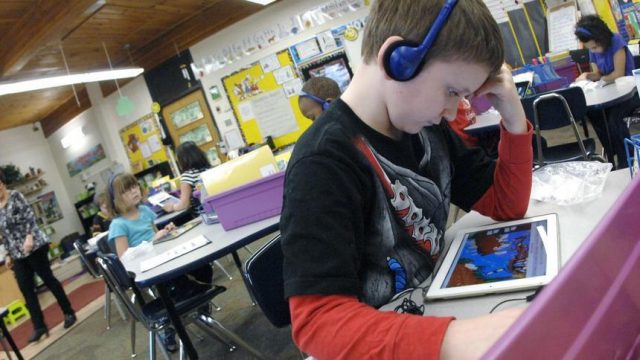Roscoe Streyle: North Dakota Won’t Be the Best Place for Education if We Don’t Make the Investments

This guest post was submitted by Minot resident Roscoe Streyle who served in the state House from 2011 to 2018.
What are the Governor, Legislature, ND University System (NDUS) or the Department of Public Instruction (DPI) doing to improve the educational delivery system, content, educational opportunities and the learning experience for North Dakota students? What are they doing to transform their systems into a nimbler 21st century educational system? These questions aren’t easy to answer, but I will try and explain a few key pieces of legislation that have been passed and some that must be passed this session.
In the 17-19 session a key piece of legislation SB2186, the “Innovation Education Bill”, prime-sponsored by the highly respected Sen. Nicole Poolman was passed. This allows more flexibility for K-12 schools to adopt innovative learning techniques to educate their students in different ways that haven’t been done in the past. The bill essentially allowed for the creation of dozens of innovation and alternative educational “think tanks”. What a great concept! Allow our schools to do what works best for them to deliver a world-class education. Superintendent Baesler said, “it is one of the most important education bills to be introduced this session for our students’ futures”. I agree and the same quote could be applied to her Computer and Cyber Sciences (CCS) proposals I will try and explain next.
[mks_pullquote align=”left” width=”300″ size=”24″ bg_color=”#ffffff” txt_color=”#000000″]I want North Dakota to be the best place in America to learn, both in K-12 and Higher Education, but we won’t be the best if we don’t make the investments. [/mks_pullquote]
The Governor, DPI, NDUS and the Legislature now need to take it a step further. Governor Burgum and Superintendent Kirsten Baesler took the first step and included proposals in the budget request. The Governor, DPI and the Legislature now need to work together and implement the innovative proposals to make computer science and cybersecurity curriculum available in ALL North Dakota schools. The goal is for students to receive at least one CCS education course during elementary, middle and high school. The ultimate goal is to create a K-12 educational environment where CCS is considered foundational education for all students. Many parents, want our children to have a well-rounded education and CCS must be part of their educational experience. In fact, a recent Gallup poll indicates over 90% of parents want their child to learn more computer science. Further, 93% of parents see computer science education as a good use of resources at their child’s school.
These goals are well researched, well thought out, and importantly have been developed as part of a collaborative effort between DPI, ESPB (Educational Standards and Practices Board), CTE (Career Tech Education), NDUS, Governor’s Office, Parents, Private Industry, and Legislators. The plan includes: creating North Dakota’s first set of CCS standards, developing teacher credentialing for licensure, providing instructional options for local schools to utilize, training at least one teacher for every 160 students at every school in the State, and providing the funding to cover the cost of training for school districts and teachers. DPI has developed many partnerships to create a menu of options for schools and teachers to choose from that fits their individual school. The proposals put forward also do not mandate anything, nor do they mandate on how to implement the CCS standards. DPI will simply make the resources available to all schools and the training available.
The CODE.org training is a prime world-wide influencer in CCS education and, thanks to temporary grants, is currently largely free to participating schools. Available courses focus on computer programming (“coding”), computer sciences, cybersecurity education, and many other areas. The educational system must adjust to the marketplace and to where the jobs of in the 21st century exist. Our children won’t all go into these careers of course, but providing them the opportunity to learn and understand the basics will provide our youth with a better understanding of the digital world we all live in – whether they choose a career in CCS industries or not. Just like we aren’t doing enough in Higher Education to produce more technical and trade school training opportunities and graduates, we are not doing enough in K-12 for the CCS fields.
It does take money to train the teachers and implement the flexible curriculum, which could be funded with carryover dollars (no new funds). This investment is badly needed if we want our children to have the best educational opportunities in the country. I want North Dakota to be the best place in America to learn, both in K-12 and Higher Education, but we won’t be the best if we don’t make the investments. This is one of those investments that we can’t wait on, we are already behind the curve a bit, but could easily catch up by moving now on these proposals.
It’s my hope at the end of this Legislative session these proposals will be adopted, funded to the appropriate level and every school by 2022 will have CCS trained teachers and instructional choices available. Take the time to visit and learn about what CODE.org, Microsoft TEALS, Cisco, NICERC, Project Lead the Way, or any of the other organizations are doing. All of these organizations badly want a more educated America, let’s take them up on their offers to help deliver more educational opportunities for our children.




